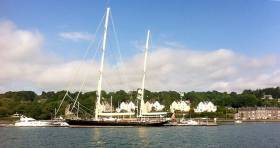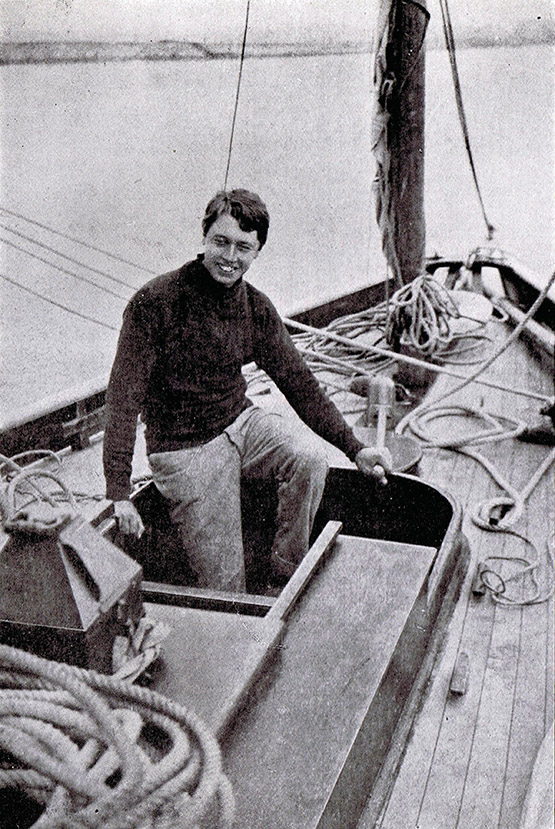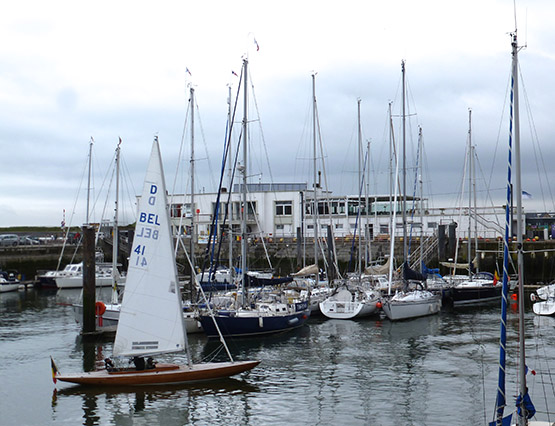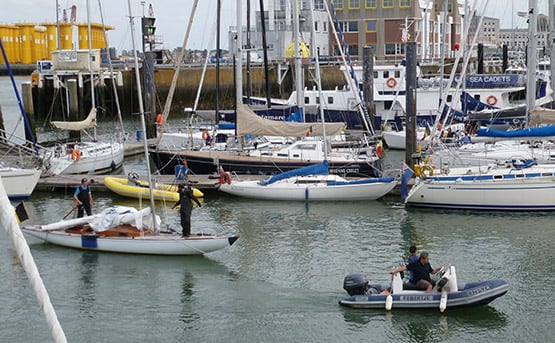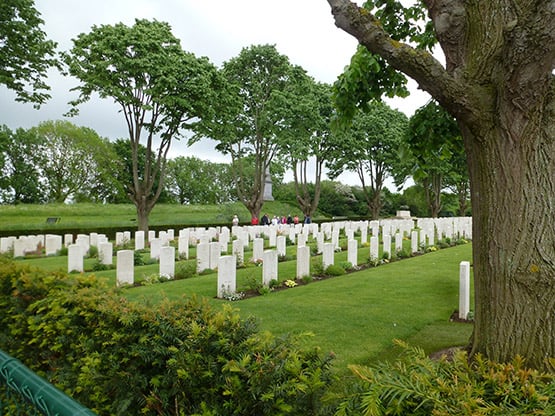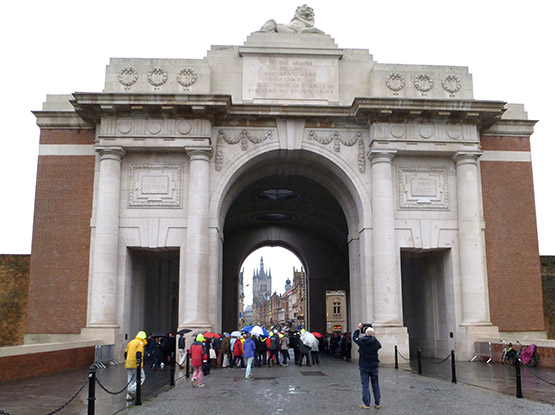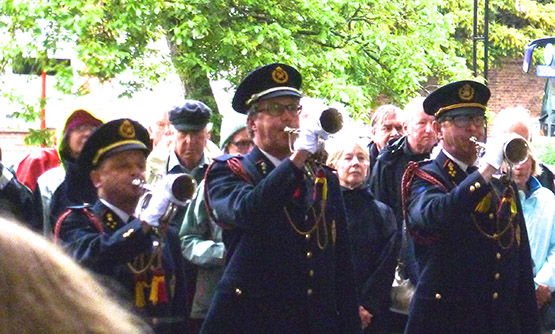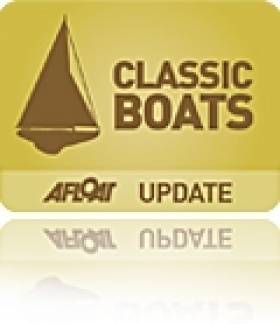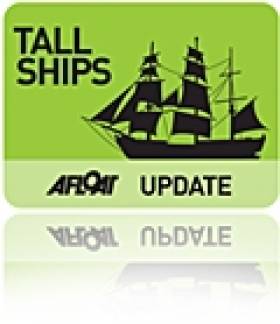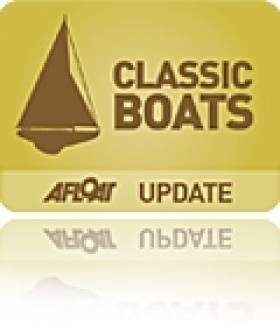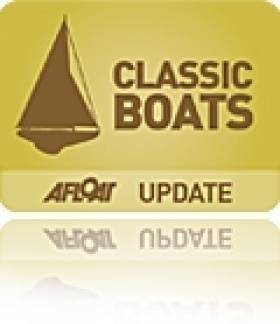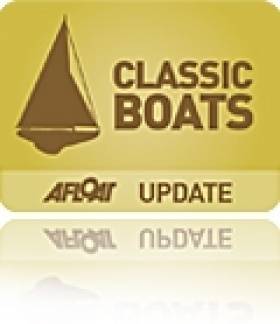Displaying items by tag: Asgard
Asgard Restoration Lecture in Cork by Marine Conservationist John Kearon
John Kearon described in one of several interviews I had with him during the conservation of Asgard at the National Museum how he had “crawled in desperation to the aftermost beams, hoping to find some evidence to prove the beams were original.”
He found them “written on the after face of a beam in faded pencil; there was a signature: “Pall Gunlarson, Lawrvik, 1905”.
The Colin Archer Museum in Larvik could confirm that the writer was a shipwright that worked in the Archer boatyard at the time Asgard was built.
John Kearon, with long experience in marine conservation work at the UK National Maritime Museum in Liverpool, led the restoration of the original Asgard in Dublin.
He had headed conservation work on vessels at the Merseyside museum and brought that experience to bear on Erskine Childers’ famous gun-running yacht and icon of Irish independence.
This Thursday night, December 1, at the Metropole Hotel in Cork, he will deliver an illustrated lecture detailing how the conservation work was carried out.
It will be presented by the Cork Literary & Scientific Society at 8 p.m.
The Society is making the lecture generally open to the public; “Non-members are very welcome to this important maritime occasion,” it says.
Asgard Arrives at Monkstown Marina in Cork Harbour
It's Asgard alright but not as we know her! This 42–metre British Virgin Island flagged sailing vessel of the same name as Ireland's beloved former Sail Training Vessels arrived into Cork Harbour today. She makes a fine picture berthed at James O'Brien's Marina at Monkstown, dwarfing all else at the latest marina facility in the harbour.
The custom sailing yacht was built by Abeking & Rasmussen in Germany at their Lemwerder shipyard , she was delivered to her owner in 1993 and last refitted in 2015. This luxury vessel's design and engineering are the work of Bruce King Yacht Design. Previously named Hetairos, her luxurious interior was designed by Andrew Winch.
Asgard's interior configuration has been designed to comfortably accommodate up to 10 guests overnight in five cabins, comprising a master suite, two double cabins and two twin cabins. She is also capable of carrying up to four crew onboard in two cabins to ensure a 'relaxed luxury yacht' experience.
Mysteries of Asgard's Irish Gun–Running Flotilla
The Erskine Childers-led Howth and Wicklow gun-runnings of July 1914 took place so quickly and efficiently that those involved ashore only had fleeting glimpses of the boats involved. Although Erskine & Molly Childers’ historic ketch Asgard is now conserved and comfortably at home in the museum at Collins Barracks in Dublin, much less is known or remembered of the other four vessels which took part. W M Nixon takes a look at a line of research which has taken a leap of the imagination to visualise one of these mysterious craft.
You only have to visit the conserved Asgard in Collins Barracks in Dublin to get a true sense of the past, and the special nature of this fine yacht. You grow into an understanding of how it was that people of the utmost respectability, people who sailed one of the best cruising yachts of her era, willingly led themselves and their friends and other yachts into a successful gun-running venture just before the Great War broke out.
That Great War gave everyone the message, loud and clear, that guns are for killing people, they’re not for fun. Yet grim and all as the ultimate message may be, Asgard herself is reassuringly peaceful. And if you have the good fortune to be in a group beside the Asgard listening to a talk by ship conserver John Kearon of how the project of saving the Asgard was achieved, you find yourself in a different world of respect for ancient objects, and a sense of promise for the future.

But in other times and other places, curiosity about the other boats involved inevitably surface. We know from photos of the time what the tug Gladiator looked like - she brought the guns to the Ruytigen Lightship off the Belgian coast to be collected by Asgard and Conor O’Brien’s Kelpie from Foynes. Asgard we know, and as for Kelpie, we have some photos to reveal she was a boat of her time, a hefty 29-ton 1871-built cutter which O’Brien fitted with a ketch rig for easier handling.
As to what happened to her subsequently, we know he used her during his brief period as a fisheries inspector off the west coast when he was employed by the underground government of the nascent Irish state, a government which functioned in a secret parallel universe in opposition to the supposed seat of power in Dublin Castle.
But by 1922, O’Brien was a free agent again, and he took Kelpie away for a mountaineering expedition to Skye off Scotland’s west coast. Returning single-handed through the North Channel in light airs and poor visibility, he slept through an alarm clock’s ringing tones, and Kelpie came gently ashore on the steep Scottish coast south of Portpatrick.
 Kelpie as pictured by Jack Finucane of Foynes Island, who sailed as crew with Conor O’Brien
Kelpie as pictured by Jack Finucane of Foynes Island, who sailed as crew with Conor O’Brien
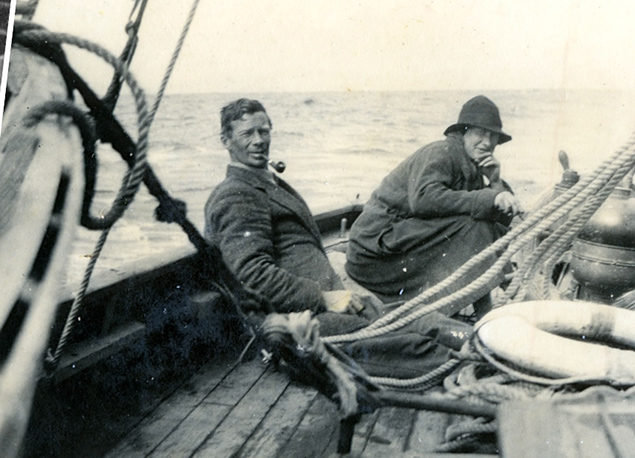 Conor O’Brien and his sister Margret aboard Kelpie off Ireland’s West Coast in 1913.
Conor O’Brien and his sister Margret aboard Kelpie off Ireland’s West Coast in 1913.
She was stuck fast, her skipper was single-handed, and there was enough of a scend running for the old boat to start showing signs of breaking up almost immediately. So O’Brien launched his dinghy, put everything he could into it – including the alarm clock which he blamed entirely for the incident – and headed away to come rowing out of the fog into Portpatrick’s little harbour, surrounded by almost all his worldly goods.
The Kelpie, having played her role, was soon consigned to history, for by the Autumn O’Brien’s new world-girdling Saoirse was already under construction in Baltimore. But in re-visiting the gun-running, we find that although Asgard landed her guns directly onto the pier in Howth, the 600 guns which Kelpie had brought towards Ireland were transferred in the shelter behind St Tudwal’s Island off the coast of North Wales on to Sir Thomas Myles’ Chotah.
Chotah had been volunteered by her remarkable owner to drop the remainder of the arms consignment – with himself in charge - on the beach at Kilcoole in County Wicklow, as his hefty vessel was fitted with an auxiliary engine, which it was felt would be more than helpful in beach manoeuvres.
As a further precaution, the Wicklow landing also used the services of the Nugget, a motorized fishing boat owned by the McLaughlin family of Howth. But Nugget – like the Kelpie – was recorded in image and memory. However, after the Kilcoole adventure, Chotah seems to have disappeared from sight, and no photos of her have yet been found.
Which is odd, because Sir Thomas Myles (1857-1937) was no stranger to the camera and a certain level of fame. He was a man of many talents in addition to being one of the foremost medical specialists of his generation, with a particular skill in hospital administration. He was politically active on behalf of Home Rule in his native Limerick, and in Dublin where he was subsequently based, he was a sportsman of many interests including boxing – he went three rounds with Jack Dempsey – while sailing was another interest, developing into an abiding love of cruising which he continued to the end of his long life.
 Sir Thomas Myles with relatives and friends in Dublin Bay aboard Faith, one of the several large yachts he owned during a sailing career which he continued until well into his late 70s
Sir Thomas Myles with relatives and friends in Dublin Bay aboard Faith, one of the several large yachts he owned during a sailing career which he continued until well into his late 70s
For the past two years, Ireland’s sailing community has recalled this remarkable man with the annual ISA/Afloat Sailing Awards being staged in the Royal College of Surgeons on Stephens Green in Dublin, using assembly rooms which Myles was instrumental in creating. As well, he is honoured in the Sir Thomas Myles board-room in the college. But although he was a member of both the Royal Irish and Royal St George Yacht Clubs, so far as I know there are no photos of any of his several yachts – some of them very large craft – on display in either clubhouse.
It’s an intriguing absence, and there’s certainly a general interest in knowing more. One person who has taken this a step further is marine artist Brian Byrnes, who has been fascinated by the Thomas Myles story since childhood. On family holidays in Kilkee, he can remember being mesmerised by the rocky inlet of Myles Creek, and was told that like many Limerick families, the Myles family holidayed in Kilkee, and young Thomas was wont to swim in this special creek, and then swim clear across Kilkee Bay while he was at it.
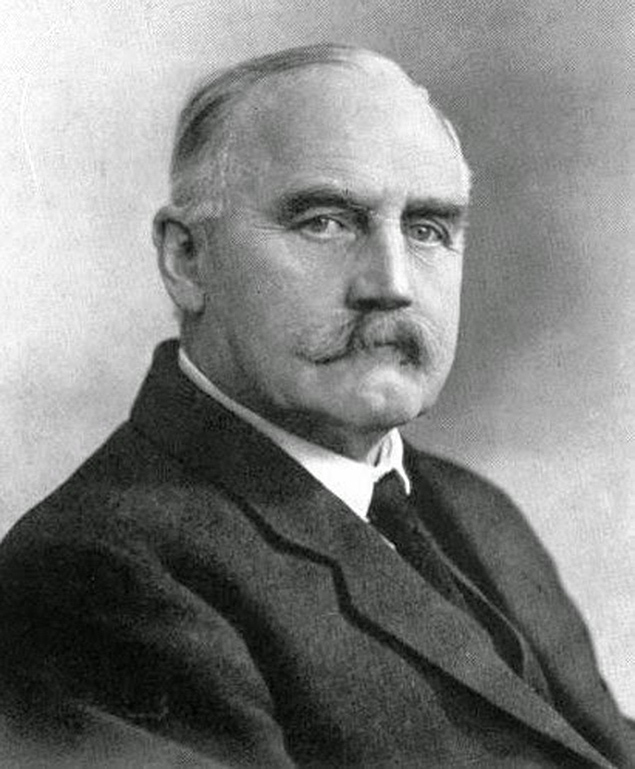 Not a man to be trifled with….Sir Thomas Myles: surgeon, sailor, boxer, swimmer, sportsman and gun-runner.
Not a man to be trifled with….Sir Thomas Myles: surgeon, sailor, boxer, swimmer, sportsman and gun-runner.
Thus this almost mythical Thomas Myles became godlike to the young Byrnes, and anything he was reported as having said was holy writ. So when the artist decided to give himself a break from the day job of painting precise illustrations of maritime scenes and specific sailing boats (in his Dublin studio he is currently producing portraits of two Olin Stephen-designed International 6 Metres), he set out to create a painting of Chotah as Thomas Myles described her.
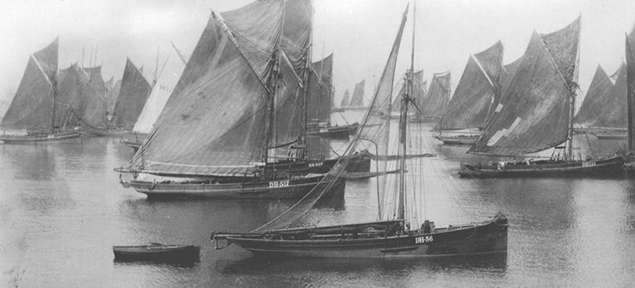 Brixham trawlers with cutter rig. Chotah is believed to have been similar to these craft.
Brixham trawlers with cutter rig. Chotah is believed to have been similar to these craft.
 In their final years as sailing vessels, the largest Brixham trawlers tended to be ketch rigged.
In their final years as sailing vessels, the largest Brixham trawlers tended to be ketch rigged.
Chotah was a yacht based on the classic cutter-rigged Brixham trawler type, 60ft long and 48 tons Thames measurement, built by S Dewdney & Sons of Brixham in 1891. She was by no means the largest or most luxurious of the yachts that Myles owned, but she suited him at a time when his medical career was at its busiest, and in due course he had her fitted with an auxiliary engine to enable him “to steam along”, as he put it himself, when time was pressing and the wind was absent.
Myles’s use of the vintage term “steam along” dated back to the days of seafaring when sailing ships were being displaced by new ships whose doughty chief engineers would describe them as “driven by steam as nature intended”. And when Brian Byrnes decided to paint a portrait of Chotah as based on the standard Brixham trawler of that size, type and era, he also did some research into how they might have been fitted with an auxiliary steam engine – in other words, how on earth did they manage to set a mainsail and have a smokestack at the same time?
Some of the bigger trawlers converted to ketch rig, which would have accommodated the smokestack immediately forward of the mizzen. But then Brian discovered that other vessels which remained cutter-rigged had come up with the idea of doing away with the mainboom, keeping the gaff permanently aloft, and brailing the loose-footed mainsail up to it in the manner of a Thames sailing barge.
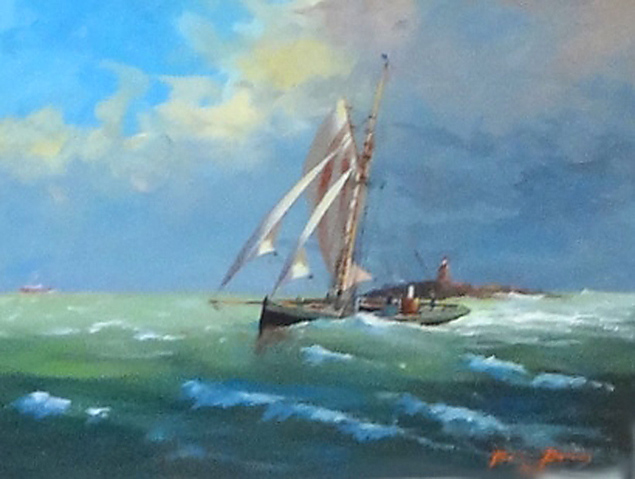 Brian Byrnes suggests that Chotah may have accommodated a smokestack for her steam auxiliary engine by having a loose-footed mainsail which brailed up to the gaff boom.
Brian Byrnes suggests that Chotah may have accommodated a smokestack for her steam auxiliary engine by having a loose-footed mainsail which brailed up to the gaff boom.
This certainly solved the problem of the mainsail clearing the smokestack, and it was in line with Thomas Myles’ accounts of Chotah “steaming along”. So in visualizing what Chotah might have looked like, the artist allowed himself complete artistic licence, and created this fine study of Chotah coming through Dalkey Sound with the Muglins beyond, and the loose-footed main pulling good-oh while steam and smoke come from the stack to indicate that the auxiliary engine is ready for action as they enter Dun Laoghaire harbour.
It’s an absolutely lovely idea, and all power to Brian Byrnes for visualising it. But unfortunately reality seems to have been otherwise. During all the excitement of the Asgard Gun-running Centenary in 2014, Pat Murphy (who played a key role both in making sure that Asgard has the semblance of a rig in her museum berth, and also led the movement to build a re-creation of her little dinghy) somehow found the time to do a bit of research on all the vessels involved with Erskine & Molly Childers and their friends in 1914. And in Lloyds Yacht Register of 1915, Pat found evidence that although he might have liked to think of himself as steaming along, Sir Thomas Myles actually installed a humble Bergius paraffin auxiliary engine in Chotah in 1913, and it was that little “stinkpot” which made Chotah indispensable for the Kilcoole gun-running.


The Lloyds Yacht Register for 1915 was the last one published for four years while World War I was fought, and then in the Register for 1920 Pat found that Chotah did indeed as rumoured go to Arklow to become a fishing boat under the part ownership of Michael Kavanagh, although oddly enough he continued to register her as a yacht.
But while a visit to Arklow Maritime Museum by Pat Murphy and fellow Asgard enthusiast Wally McGuirk may have failed to find any photo of Chotah in her Arklow days, what it did find was clear evidence that she had been sold off for fishing by the end of World War I, and her Fishing Permit for 1919 is on display, together with the names of all her crew.


Who knows, but somewhere in Arklow there may be an old photo of the basin with Chotah among the fishing boats there. It would be quite a find. Meanwhile, it seems that Brian Byrnes might have to take his brush to that smokestack in order to create the more probable reality.
On the other hand, just as a postage stamp with some printing fault or without perforations is worth very much more than an unblemished one, so it could be argued that Brian’s visionary notion of Chotah with a smokestack is truly priceless. If somebody of a pedantic frame of mind wants a painting showing her as she more probably was, then it should be commissioned as a new work of art. Meanwhile, let’s hear it for the smokestack.
HMS Caroline: Shared Belfast Commemoration Expresses New Attitude To World War I In Ireland
Next Tuesday, May 31st, marks the Centenary of the outbreak of the Battle of Jutland off the northern coast of Denmark, the greatest sea battle of World War I (1914-18). In terms of the fire-power of the 250 vessels in action – many of them the most powerful first class battleships of their time – it may still be the greatest naval battle ever fought, even if its results were not clearcut during the engagement itself. For Jutland subsequently ensured that Imperial Germany’s surface fleet stayed largely in port, thereby closing off seaborne sources of supply. This contributed to the inevitable outcome of the Armistice on November 11th 1918, though not until after there has been much further slaughter on land between the warring armies.
Of the many ships which were present at Jutland, only one has survived. This is the C-class light cruiser HMS Caroline, which from the 1920s onwards served as the Belfast HQ of the Royal Naval Volunteer Reserve. She was decommissioned from this role some years ago, and there was some doubt as to her future. But her unique position as the only survivor of Jutland has seen a flurry of activity on the ship for the past eight months and more, with the Caroline getting the benefit of a €20 million Lottery Heritage grant for her restoration as the centrepiece of a Naval Museum which will start to go public from next Tuesday. W M Nixon takes up the story, and goes on to provide the unexpected follow-up of how a leading player in the Howth gun-running of 1914, a man honoured in Irish history, was last weekend celebrated in Belgium as a great British hero of World War I.
In terms of shared memories handed down through the generations, a hundred years is little enough time. But Centenaries offer an opportunity for taking stock, a time for re-shaping attitudes to acknowledge the fact that combatants in any conflict had a shared humanity, however opposed their views and objectives may have been. The recent unveiling in Glasnevin of the impressive Memorial which lists everyone killed in the Rising of 1916, regardless of which side they were on, was a significant step. And next week’s shared ceremony in Belfast at HMS Caroline, which will include the Irish Naval Service in an official capacity, will acknowledge the many Irish sailors - sailors from what is now the Republic - who lost their lives at Jutland just five weeks after the Easter Rising in Dublin.
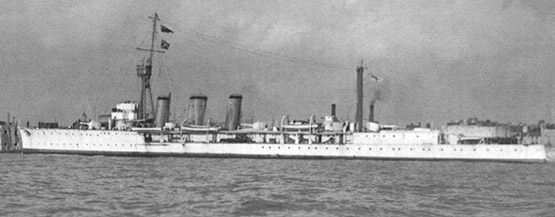
HMS Caroline in her original form – she was commissioned in December 1914
The enormity of the carnage and endless stalemate of the Great War, and the industrialisation of the means of fighting with the institutionalisation of those who found themselves involved, is something almost beyond our grasp today, enjoying as we do our lives of multiple choices and continually available diversions. And when you read the obnoxiously gung-ho editorials of the pro-war newspapers of a hundred years ago, cheerfully exhorting young men to an almost certain and very unpleasant death, it is to realize that the past is indeed a different country.
Yet it’s a country which we have inherited and must try to understand. To do so, perhaps the most helpful way is through a contemplation of the individual stories involved, for in total war individuality is one of the first casualties.
But the individuality of each sailor is quickly lost in the sheer weight of statistics. The death toll at Jutland may have seemed minor by comparison with the wholesale slaughter which occurred when some new army offensive was launched on the Western Front. But the figures are chilling nevertheless, with Royal Navy sustaining more than 6,000 deaths. This was more than twice the German losses, but although Britain had lost such prestige ships as the largest battleship HMS Queen Mary (she blew up with 1266 deaths – only 18 survived), the Royal Navy was still powerful enough after the battle to ensure that the German fleet was confined to port.
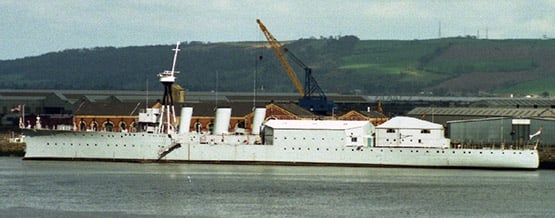
From the 1920s, HMS Caroline served as the Belfast HQ of the Royal Naval Volunteer Reserve. Her accommodation was decidedly limited, so later additions included what looked to casual observers to be sheds rather than cabins.
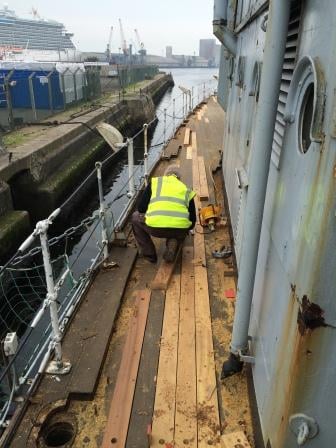
Work under way restoring and where necessary replacing HMS Caroline’s deck
Of the death toll in the British side at Jutland, at least 350 were from Ireland, and while it’s reckoned that 90 were from what subsequently became Northern Ireland in 1921, recent research suggests that 266 were from what became the Free State and is now the Republic, with nearly half of them being from the great naval port of Cork Harbour.
At Belfast Harbour, the personal touch will be manifest as more than 200 relatives of those from Ireland who were lost at Jutland will be attending next Tuesday’s ceremonies, whose staging will quite rightly cause us to confront yet again the sheer mindless horror of the Great War. But last weekend in Belgium, we were remembering people – sailing people to be precise – who had gone off to the Great War in an almost festive frame of mind.
In my case, involvement came through Asgard and the Howth gun-running of 1914. We all know about Erskine and Molly Childers and Mary Spring-Rice and their professional crew of Charles Duggan and Pat McGinley from Gola Island in Donegal. But it was the sixth member of Asgard’s crew, Gordon Shephard, a keen amateur sailor and personal friend of Erskine and Molly Childers, who remained something of a mystery.
Shephard’s involvement in the gun-running was an even greater mystery to his fellow officers in the British Army, for he was a career soldier of impeccable background, Eton-educated and a product of Sandhurst military academy. But he had a liberal frame of mind which strengthened as he grew older, and he was - like Childers - a strong supporter of the Irish Home Rule movement. So when it was proposed to smuggle a consignment of 1500 German guns into Ireland aboard Childers’ Asgard and Conor O’Brien’s Kelpie in response to the importation into the north in April 1914 of 24,000 German guns by the anti-Home Rule Ulster Volunteer Force, Shephard was very much involved, though he requested he be called “Mr Gordon” during it all, as the name Shephard might have alerted the authorities and jeopardised his military career.
That Shephard was part of an English social elite there is no doubt, and the Irish people involved were definitely pillars of society too. So much so, in fact, that in advance of last night’s 185th Anniversary Dinner of the Royal Irish Yacht Club in Dun Laoghaire, I was told that of all Ireland’s yacht clubs it was the RIYC which was most closely connected to the gun-running. For although Erskine Childers bought his first cruising yacht, the 2.5 Rater Shulah, from G B Thompson of the Royal St George YC in 1892, and subsequently bought a Water Wag for use on Lough Dan in what was then Kingstown in 1894, he never seems to have been a member of any Irish yacht club, whereas Conor O’Brien was to be closely associated with the Royal Irish, and the 600 guns from his old ketch Kelpie were transferred to the auxiliary yacht Chotah owned by Sir Thomas Myles RIYC, who subsequently landed them on the beach at Kilcoole County Wicklow.
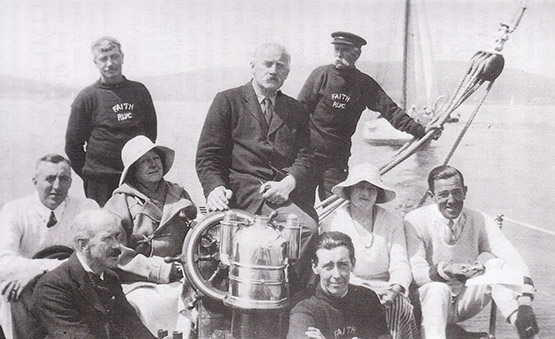
Sir Thomas Myles with friends and crew aboard his sailing cruiser Faith (RIYC) in Dublin Bay in the late 1920s. In 1914, with his 60ft auxiliary-powered Chotah, he took on board the 600 guns brought from the Belgian coast by Conor O’Brien on Kelpie, and landed them on the beach at Kilcoole, County Wicklow. Photo: Courtesy RIYC
Yet apart from the fact that since 1911 this mystery man Gordon Shephard had been a fellow-member with Erskine Childers in the London-based Royal Cruising Club, with his subsequent wartime career with the Royal Flying Corps being one of great distinction, little enough was know about him until enthusiastic amateur historian Michael Branagan discovered that a Memoir of Gordon Shephard, edited by Sir Shane Leslie, had been privately printed in 1924, and a copy of it was in the library at Castle Leslie in County Monaghan.
Michael being Michael, he got himself up to the depths of Monaghan and spent what must have been the most of a day making two good photocopies of it, one of which he gave to me, and thus we both now know more about Gordon Shephard than you’d have thought possible, yet somehow he remains as elusive as ever.
For here was a young Army officer who accidentally shot himself in the foot during some horseplay in the Mess, yet his charm and abilities were such that he was able to continue his army career despite being described by one fellow soldier as “the least military man I ever met”.
At Eton he’d been criticised by his tutor as being too relaxed in his attitude to discipline, yet when he took up cruising with great enthusiasm around the age of 20, his light hand of authority proved exactly right for getting the best out of his crews. In 1911 he was awarded the world’s premier cruising trophy, the RCC Challenge Cup, for an extraordinary voyage to the furthest point of the Baltic with his 9-ton yawl Sorata. And then in 1913 he was awarded it again for his even more famous Autumnal venture of bringing Erkine and Molly Childers’ Asgard from Norway to Conwy in North Wales via the Shetlands and the Outer Hebrides through severe storms, including a genuine Force 11.
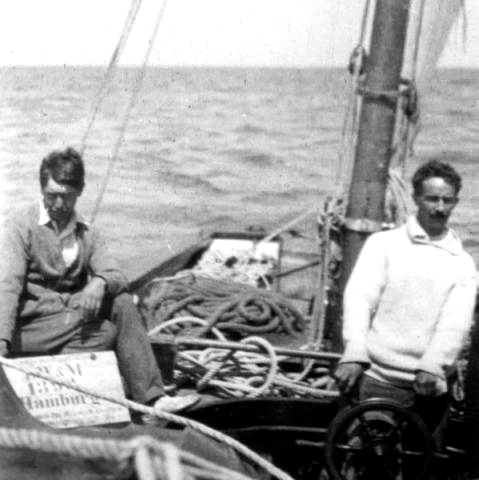
Gordon Shephard and Erskine Childers aboard Asgard with the Howth guns, July 1914. Although everyone else was keen to have their photo taken, Shephard reckoned that as a serving army officer, it might not be a good career move to appear full face
It was typical of the affection in which Shephard was held by his many friends that, owing to his leave running out, he’d to return to his regiment leaving Asgard in Conwy, yet not once did Childers complain about it. This was despite the fact that Shephard had been meant to deliver Asgard to Southampton. But far from complaining, Childers helped to put together the Shephard log which was awarded the cup.
When the gun-running proposal came up in May 1914, Shephard doesn’t seem to have hesitated at all in volunteering to go along. He was engaging company on board, with a nice line in humour, and in her personal log of the venture, Mary Spring-Rice records how he volunteered to cook the supper in rough weather when Asgard was wellnigh uninhabitable with the cargo of guns stowed everywhere. Shephard gallantly weighed in with the cooking of an enormous omelette. But when it was almost ready, he decided it needed an extra little something. So he tipped in the most of a tin of Lyle’s Golden Syrup. We’re told that Syrup Omelette tastes better than it sounds…..
Shephard played a key role in the actual landing of the guns at Howth, for although he’d to leave Asgard at Milford Haven for a week back on duty with the army, he was one of the few who knew the details of Childers’ berthing plans, and on that breezy July Sunday lunchtime a week later, he was stationed at the end of the East Pier in Howth for the crucial task of taking and securing the lines as Asgard came into port with the fresh wind right up her stern. Molly Childers made a superb job of the helming, but without those lines smartly made fast ashore, it could have gone very wrong. Yet thanks to Gordon Shephard on the quayside, all went like clockwork.
But within a week, the Great War had broken out, and with his military future now in the Royal Flying Corps which he had joined on its formation in 1912, his formerly pedestrian rate of promotion became meteoric. He had a magnificent war - if there is such a thing – and by 1917 at the age of 31 he had become the youngest Brigadier General in the British Army with many decorations including a Legion d’Honneur from the French for heroic service in 1915.
Yet he remained the same unassuming Gordon Shephard, refusing to become a “chateau general” despite his obvious talents in aviation innovation and strategic planning. Instead, he stayed with his units, and regularly visited each one at their various airfields, flying himself in a little scout plane to make regular personal visits to sort out problems and encourage his pilots.
Nevertheless the war took its severe toll on him. When we look at the photo of Gordon Shephard aboard Sorata in 1911, we’re looking at a photo of a youthful 25-year-old sailing enthusiast. But when we look at the photo of Gordon Shephard when he became a Brigadier-General just six years later, we’re seeing someone who looks about 50, and a badly worn 50 at that.
He died soon afterwards in a flying accident. He’d set out as usual on 19th January 1918 to fly himself to several of his units, but just short of the first airfield on his route, his little plane came spinning out of the clouds, and he suffered ultimately fatal injuries in the crash.
Without a care in the world. A youthful Gordon Shephard aboard Sorata aged 25 in 1911 Photo courtesy Castle Leslie
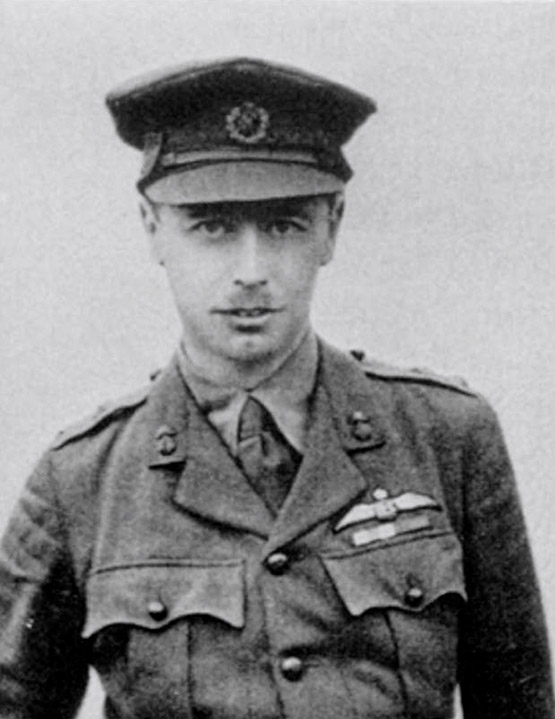
Brigadier-General Gordon Shephard in 1917 – at 31, he was the youngest Brigadier-General in the British Army, but he had pushed himself so hard that he looked more like 50
His funeral was an impressive affair, attended by an awesome array of the top brass, yet in the huge losses of the Great War, the name of Gordon Shephard slipped from view. As he left no family, he would have been forgotten were it not for the Howth gun-running and those two impressive awards of the Royal Cruising Club’s Challenge Cup in 1911 and 1913.
Belgium’s Royal North Sea Yacht Club at Ostend. While most of its fleet is cruisers and offshore racers, the club also has a class of vintage International Dragons. Photo: W M Nixon
This year, the RCC decided to hold a rally to Ostend to remember its many members who died in the Great War, and visit some of the battle sites of the Western Front over which Gordon Shephard had flown on many of his highly-valued reconnaissance flights. It was last weekend, and there was a gathering in the Royal Nord See Yacht Club, with a goodly part of the assembly was made up of people who’d sailed there. The pace was set by Commodore Henry Clay, who’d voyaged from Chichester Harbour in West Sussex with his wife Louise in Highlander, his little slip of an H Boat. Yet despite their cramped accommodation, the Commodore stepped ashore looking immaculate.
Dragon manoeuvres in Ostend. Immediately beyond is the H Boat Highlander, which RCC Commodore Henry Clay and his wife Louise had sailed to the Rally from Chichester Harbour in West Sussex. Photo: W M Nixon
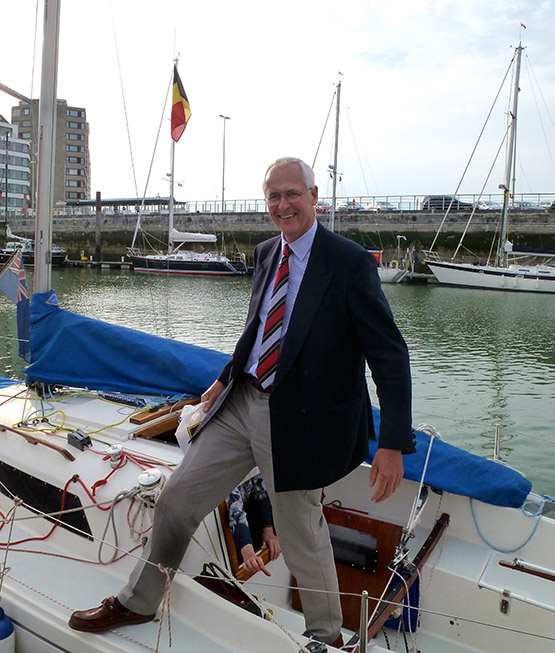
Setting the sartorial example. Despite being aboard the smallest boat in the fleet, the Commodore was the neatest of the lot of us. Photo: W M Nixon
With our trio from Ireland, we’d already done the quintessential Belgian thing with a visit that day to the ancient watery city of Bruges nearby, which is even more wonderful than you’d imagine if approached in the right spirit. And then in the RNSYC we were treated to a classic Belgian fishing port dinner of majestic cod with all the trimmings, and during it those of us with some knowledge of the club’s war heroes talked of them and their eccentricities (of which there were many) and their achievements.
Bruges evokes a sense of civilisation and peace – it takes an effort to realise that it has frequently been fought over, and the Western Front in the Great War was just up the road. Photo: W M Nixon
There’s no such thing as OTT in Bruges – some things are just even more normal than others. Photo: W M Nixon
It had been a sweet warm evening of early summer, but next day the rain eventually set in with Belgian thoroughness - probably the best conditions in which to see what’s left of the Western Front and its hundreds of cemeteries and memorial sites and former military installations, for I don’t think you could cope with it in bright sunny weather. But pleasant little houses and hamlets are everywhere - the gallant Belgians are determined to maintain normal life as much as possible after a war which displaced 600,000 of them from their homes, such that it was 1930 before life had returned to anything like normal, and all that with the next World War just nine years down the line…….
In Flanders Fields…..the former war zone in Belgium has hundreds of immaculately-maintained cemeteries. Every grave is kept to the same high standard, as no-one knows when some relative might call by, though many are the graves of soldiers “Known Only Unto God”. This happens to be the cemetery beside the Dressing Station where Canadian doctor John McCrae was based - he wrote one of the finest poems of the war, “In Flanders Fields”. Photo: W M Nixon
Our journey had extra specific purposes, as two of the group wished to plant poppied crosses at graves of relatives which the extraordinarily obliging staff had located in a sea of headstones,
Then like so many before us, we ended our tour at the Menen Gate in Ypres, Lutyen’s memorial masterpiece, for the Last Post at 2000 hours on Sunday evening.
In a human and civilising touch, the Last Post is now provided by the local Fire Brigade, as most of the military have moved on, while any remaining units are only on a short posting. For their part, the Ypres Fire Brigade make a very fine job of it. The first call of the bugles came through loud and clear, and then there was a pause while various groups laid wreaths with impressive natural dignity. There followed the second bugle call, resonating majestically in the acoustic perfection of the great arch. Then despite the large crowd, for a while it was so silent all you could hear was the steady fall of the rain. And birdsong. You get a lot of birdsong in Belgium.
The Menen Gate at Ypres – the little town was obliterated in the Great War, but when the inhabitants were finally able to return, they insisted on re-building it exactly as it had been before. Photo: W M Nixon
The captains and the kings and their many soldiers have all now gone – and in their absence, the Ypres Fire Brigade does a very good job of sounding the Last Post at the Menen Gate every evening at 2000hrs. Photo: W M Nixon
Having been to Ypres and having seen so much that is utterly moving or numbing in the countryside about it, we wish them well, those who will be gathering at HMS Caroline in Belfast next Tuesday. It is painful to remember. But it is worse to forget.
And then perhaps, as we get used to HMS Caroline being a ship of interest to everyone in Ireland and indeed to people throughout Europe and beyond, would it be too much to hope that she could become the centerpiece of a proper maritime museum? For although the Ulster Folk & Transport Museum along the coast at Cultra do have a small collection of boats of Irish interest, some are kept in store and not displayed at all, while others aren’t looking too happy amidst a maze of agricultural artefacts. Surely a port like Belfast could provide them with a proper home?
New Lease of Life for Vintage Wooden Boats Is a Maritime Highlight
#woodenboats – It's an interesting time for old wooden boats. They may be traditional craft, or classics, or simply ordinary timber boats which have reached a stage in life where they need serious and special attention. Whatever the circumstances, it's clear that their situation strikes a chord with sailors everywhere. And when there's good news about a restoration, it heartens the maritime community to know that worthwhile plans are being implemented. W M Nixon takes us on a tour.
The maritime highlight of this past week was down in the far southwest, at the ceremony in Liam Hegarty's boatyard at Oldcourt above Baltimore on the River Ilen when the "whiskey plank" was fastened in place to complete the hull re-build of the 1926 Conor O'Brien 56ft trading ketch Ilen. It has been a long haul since Ilen was brought back to Ireland from her working area in the Falkland Islands in 1997. Yet somehow, despite all sorts of problems of which the economic recession was only one, the Ilen really is starting to look ship-shape again.
Then in another part of the country, the word had come through that one of the Belfast Lough 27ft S Class sloops, twenty of which were built on the shores of Ballyholme Bay between 1946 and 1963, was facing extinction in a corner of County Louth. The news resulted in a flurry of photos on the Afloat.ie website spurred on by the indefatigable Pat Murphy, and soon the Sorona found herself a new home in a yard in Newry.
There, the story is that she'll be sharing space with the vintage ketch Silvery Light, a substantial vessel built in 1884 on the beach at St Ives in Cornwall to be a herring drifter, and now undergoing a much-needed restoration in Newry after being brought by new owners into Carlingford Lough last Autumn.
Sorona may have been only 52 years old. But her deteriorating condition was a reminder that the climate of Ireland and the seas around us can be merciless to a wooden vessel unless - whether deliberately or by happy accident - the boat is stored in a timber-friendly sheltered environment which is not too hot or cold, nor excessively wet or dry.
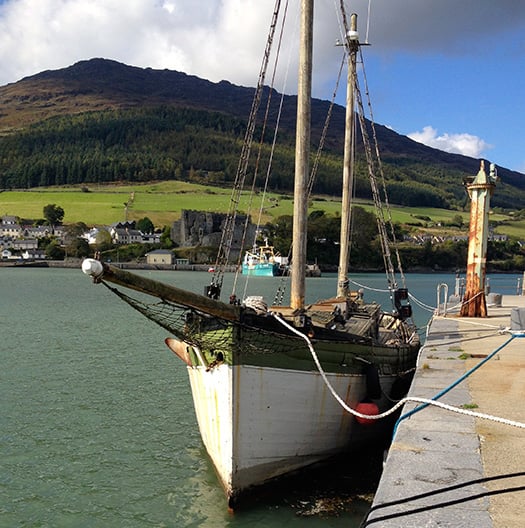 A formidable restoration challenge. The 1884-built ketch Silvery Light – seen here in Carlingford last October – will be undergoing restoration in Newry. Photo: Peter Redmond
A formidable restoration challenge. The 1884-built ketch Silvery Light – seen here in Carlingford last October – will be undergoing restoration in Newry. Photo: Peter Redmond
In the middle of the Irish Sea in the ancient capital of the Isle of Man at Castletown, the 26ft schooner Peggy had survived remarkably well in her harbourside "boat cellar" under Bridge House. In fact, her survival was miraculous, as Peggy was built in 1789, making her probably the oldest yacht in the world. But in recent years, it became clear that a major conservation project was going to be needed to preserve this unique craft.
And just three weeks ago, for the first time in 180 years, the Peggy was removed from her private space in a skilled operation. She is now safely ensconced in a specially prepared conservation workshop in the island's modern capital of Douglas, where it is anticipated the painstaking process of preserving this exceptional gem of maritime heritage could take five years.
Once you have the ideal conditions of micro-climate in place for doing the job, conservation is a long haul, a project of infinite patience. One of the best examples of how it can be done successfully is in Dublin with the Asgard, now on display in Collins Barracks. John Kearon, who learned his shipwright skills in Arklow and then broadened them to include historical work with the Liverpool Maritime Museum, was to lead the team working on this from 2007 until its completion in 2012.
The result is a multi-value display, as the 1905-built Asgard has her place in Irish history through the 1914 gun-running to Howth, she is also totally associated with Erskine Childers which takes us, among other elements in a complex history, into the world of his 1903 best-selling espionage novel The Riddle of the Sands, and she is a marvellous example of the work of the great designer-builder Colin Archer of Norway in creating a very able seagoing yacht of the era, one of the best cruising vessels of her time.
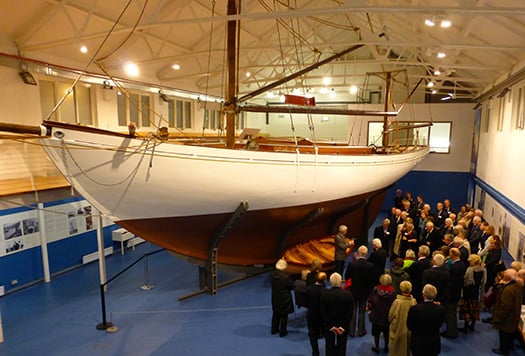
The Asgard in Collins Barracks is a fine example of conservation. A group of Erskine Childers enthusiasts from the Royal Cruising Club is seen here listening intently to a talk by conservator John Kearon about the vessel and the preservation work done with her by his team. Throughout her ownership by Erskine & Molly Childers from 1905, Asgard played a prominent role in the activities of the RCC, and in 1913 their friend Gordon Shepherd was awarded the club's historic Challenge Cup for his remarkable Autumn cruise with Asgard from Norway to North Wales via the Shetland Islands and the Hebrides. Photo: W M Nixon
In her day, the little Peggy was also something of a unique star. Though based in the Isle of Man and most active during the 1890s, she was never in Ireland. Had she been seen on the Irish coast, it would probably have been because she'd been captured by the privateers and smugglers of Rush in North Dublin, who were the capture and contraband industry leaders of their day.
So when Peggy's owner George Quayle (1751-1835) took her "abroad", it was prudently to northern England to race successfully against a small fleet of early yachts on Windermere in the Lake District, though we can be sure that if the men of Rush had come anywhere near him, Quayle would have put up a gallant fight, as Peggy was an armed yacht with miniature cannons which most certainly weren't toys.
But it's the realization that Quayle was active at sea with the Peggy in the years after Luke Ryan of Rush was at his busiest, yet before James Mathews of the same port was at his most active, which helps us to grasp her historical significance. She was sailing the Irish Sea well before the Battle of Trafalgar. But thanks to being immured for a hundred years in her boat cellar after George Quayle died in 1835, this small but significant vessel has survived to become something of extraordinary value today.
Her inevitable deterioration was accelerating in recent years because of mineralization of her fastenings, which were not only consuming themselves, but were damaging all the timber about them. However, her conservation was not something to be undertaken lightly. The provision of a proper facility had to be organised, and then the liftout, clear over the tops of the harbourside houses, had to be planned within inches.
It was all relatively new territory for many of those involved, with much preparatory work. So what had originally been planned as an Autumn 2014 lift finally became possible in late January 2015, just when the weather went to pot, with one gale after another making for impossible conditions. But then one cold Thursday morning at the end of January, the wind maps suggested the arrival of a brief lull in the northwest gales. It arrived exactly on time on a sunny day suggestive of early Spring, and gently but steadily the Peggy emerged.
As Chris Weeks of Manx Heritage remarked as he watched from the parapet above George Quayle's little boat dock, the one thing
they didn't want to hear was any creaking or groaning. If the special lifting cradle was doing its job, the Peggy would rise from her nest of 180 years in perfect silence. And that's exactly how it went, with the lift done in two stages as they were working in very confined streets and spaces.
{youtube}-UyKjwdAhgw{/youtube}
Of course, after all the fuss those of us in the Peggy Appreciation Society have been making for years, when she did finally come into the open the inevitable reaction was: "But she's very small". What on earth did they expect? Something like Nelson's Victory rising up over the old houses of Castletown? How many times do we have to reiterate that she's only 26ft in overall length, just a foot longer overall than a Folkboat, though with greater bulk and a longer waterline.
What her emergence did properly reveal, for the first time in all those 180 years, is just how much the Peggy is a vessel of her era. This is indeed a ship – albeit a miniature one – of the 18th Century. But she's an 18th Century high performance mini-ship nevertheless – this is undoubtedly a vessel well worth conserving.
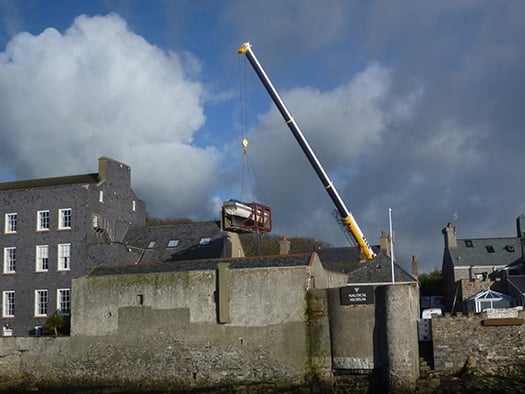
Peggy aloft. The newest crane in the Isle of Man lifts the oldest boat in the Isle of Man. Photo: Michael Kneale
So the day went well. And for those with a technical interest in such things, the word is that the delicate lifting of the oldest boat in the Isle of Man was done by the newest crane on the Isle of Man, a Japanese made Tadano recently delivered (for a cool £550,000) to Mann Crane Hire whose boss Chris Barnes was understandably proud of the smooth work put in by his supervisor Colin Fitzgerald and crane driver David Hooper.
Thanks to their good work everyone was able, for the first time in 180 years, to fully admire and savour the Peggy's lines. To the uninitiated, she may look like just another 26ft clinker-built boat. But for connoisseurs, she's living history with a stylish hull, as she has the most gorgeous hollow waterlines forward, and a sweet run aft – George Quayle had himself a flyer.
 To a casual observer, this may look like just another 26ft clinker-built boat. But for connoisseurs, this is a genuine miniature of a 17th Century ship - the Peggy is very special. Photo: Michael Kneale
To a casual observer, this may look like just another 26ft clinker-built boat. But for connoisseurs, this is a genuine miniature of a 17th Century ship - the Peggy is very special. Photo: Michael Kneale
So it's a bit sad that, as with the Asgard, we have to accept that conservation means the Peggy will never sail again. But thanks to John Kearon's painstaking work, the plans of Asgard as she was originally in 1905 are readily available for any group wishing to build a seagoing replica. Stranger things have happened. And as the Peggy is of such a manageable size, it's even more likely that a new seagoing replica of the little Manx schooner will appear some time, and maybe sooner rather than later. After all, she'd be much the same size as the "new" Shannon hooker Sally O'Keeffe down in Kilrush, which is absolutely on target as a community maritime project.
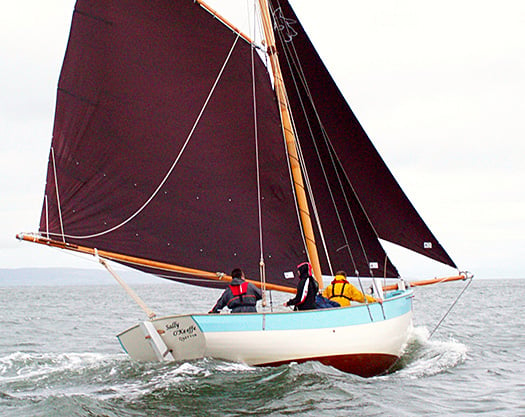
The 2012-built Sally O'Keeffe on the Shannon Estuary is much the same size as the Peggy of Castletown.
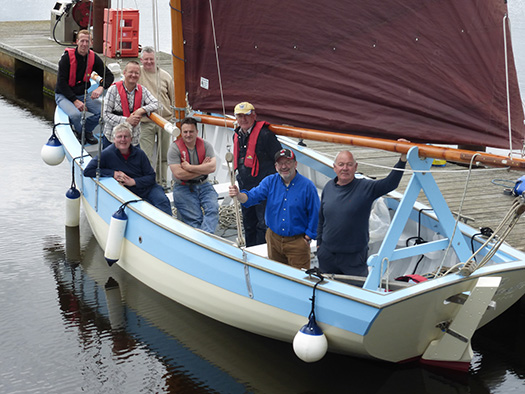 A genuine community project. Some of the team who built Sally O'Keeffe in Querrin aboard the boat in Kilrush with lead builder Steve Morris second left in the trio up forward. Photo: W M Nixon
A genuine community project. Some of the team who built Sally O'Keeffe in Querrin aboard the boat in Kilrush with lead builder Steve Morris second left in the trio up forward. Photo: W M Nixon
Nevertheless after immersing ourselves in the dusty academic topic of proper boat conservation, it's like a breath of fresh air to consider the Ilen, for she will definitely sail again. Tom MacSweeney of this parish was at the ceremony, so we'll defer to himself for his detailed report on the occasion in the fullness of time. But just from looking at the photos, you can get some idea of the quality of the workmanship that Gary MacMahon and his team from the Ilen Trust and Boatbuilding School in Limerick are getting from Liam Hegarty and his shipwrights at Oldcourt.
The pure style of the new planking is a joy to behold. And as for the use of classic bronze spikes for the fastenings, they're a work of the craftsman's art in themselves. Gary MacMahon brought one along to the recent Sail Training Ireland Annual Awards ceremony in the Mansion House in Dublin, and in that setting and on that occasion, you couldn't help but think that if our impoverished nation had been able to utilise bronze fastenings of this standard in Asgard II when building her in the late 1970s, rather than the galvanized steel fastenings that had to be used, then our beloved sail training brigantine might still be sailing today.
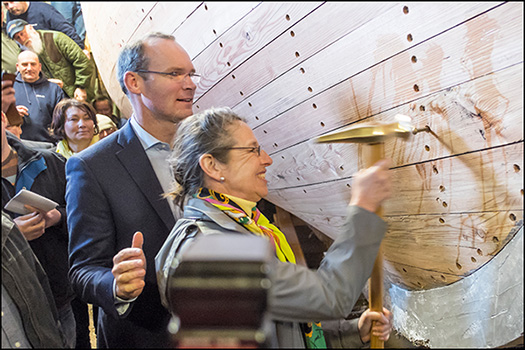
Quality work at every level. The superb workmanship on the Ilen restoration by Liam Hegarty is much in evidence as Minister for the Marine Simon Coveney supports Kate Jarvey of the Ruth Lilly Philanthropic Trust as she drives the bronze fastening to complete the "whiskey plank". Photo: Kevin O'Farrell
But Asgard II is long gone, and so too is Conor O'Brien's Saoirse, the 42ft Baltimore-built ketch in which the Limerick sailor made his extraordinary voyage round the word south of the Great Capes in 1922-25. Thus Ilen is the only tangible link to that remarkable and very historic achievement. For those who enjoy looking at line drawings of boats (not everyone does - there are some who claim that such technical stuff makes them feel "disenfranchised"), it's intriguing to compare the lines of the 42ft Saoirse and the 56ft Ilen.
They're clearly sisters, but you'll note that the Ilen people have made sure that Tom Moynihan of Baltimore is given a significant amount of credit for the design, for down in West Cork they'll tell you that for all that Conor O'Brien was an architect by profession, it took Tom Moynihan's skills to turn his rough concept sketches into vessels capable of sailing so ably across the oceans.

The lines of Ilen as taken off the hull by laser scanner
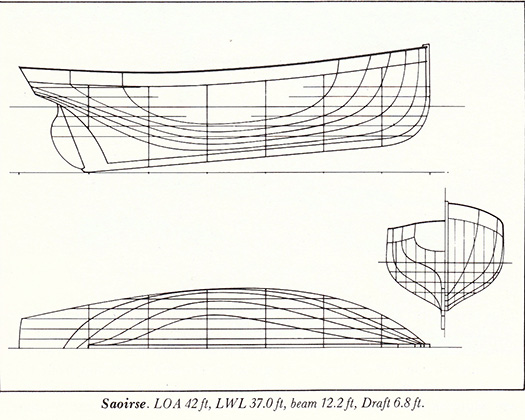
The hull lines of Saoirse as interpreted by Myles Stapleton (designer of Sally O'Keeffe) from basic drawings by Conor O'Brien
An Irish designer who didn't need anyone's help to make his creations look like proper boats was John B Kearney (1879-1967). He may have started his working life as a boy apprentice at Murphy's Boatyard in Ringsend in the early 1890s, while his working life was to be spent with Dublin Port & Docks where he rose to be Superintendent of Engineering Works. But his lifetime ambition was always to be a yacht designer, he trained and studied for it in his very limited spare time from boyhood, and then he worked at it throughout his long retirement. When he finally died at the age of 87, his gravestone in Glasnevin says it all, as it simply reads: John Breslin Kearney.....Yacht Designer. Beloved and respected by all that knew him.
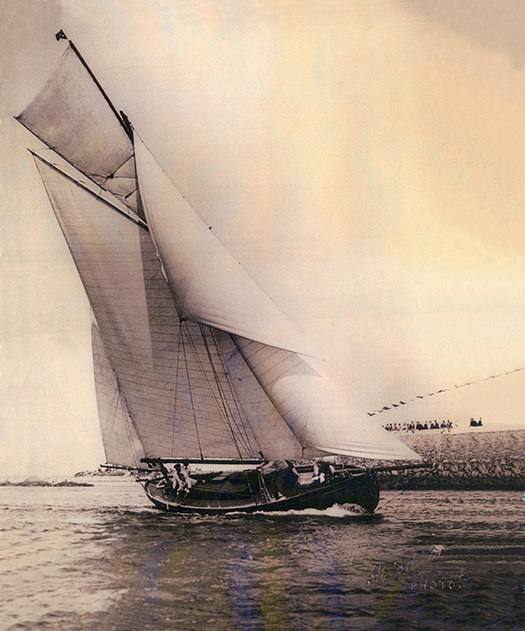
Mavis in her element under Skipper Kearney's command, on her way to winning Skerries Regatta in 1928
For everyone who sailed with him in his many successful cruises and races, he was always Skipper Kearney, and Skipper Kearney's finest creation was the 38ft yawl Mavis which he designed and built himself in Ringsend in 1923-25. Mavis went to America in 1956, and from time to time we've mentioned the continuing process of restoration on her in Camden, Maine, which has been going on for quite a few years now. It has been a lengthy process as owner/restorer Ron Hawkins has to take time out now and again to earn extra funds as a shipwright in order to to keep the Mavis restoration show on the road.
But it's getting there at last. So much so, indeed, that having given the hull of Mavis its first coat of paint in more than twenty years just a couple of weeks ago, Ron and his partner Denise Pukas are now talking of a re-launch date of July 4th 2015 for the restored ship, this treasure of the Irish yacht designer's art and craft.

The quality of workmanship in the restoration of Mavis is clearly displayed. Note how John B Kearney skillfully carried the beam well aft in order to provide a wide and comfortable afterdeck despite incorporating a canoe stern. Photo: Denise Pukas
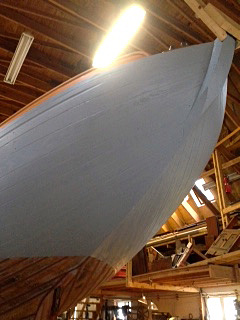
The canoe stern on Mavis with its first coat of fresh paint in 20 years. Here we can appreciate again how John Kearney managed to have an elegant canoe stern while providing plenty of deck space aft. Photo: Denise Pukas
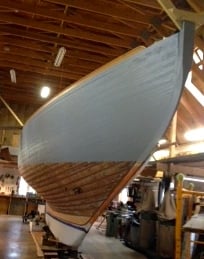
The most famous Kearney hull of all begins to emerge from restoration. It is hoped to re-launch Mavis on July 4th 2015. Photo: Denise Pukas
It would be pleasant to keep this week's commentary on a good news theme right through to the end, but the various emails about saving the Sorona from an untimely end in County Louth brought the information that there are skilled boatbuilders in places like Arklow who are looking for boats needing restoration - not as a commercial venture, but rather as a worthwhile private project.
The secret of it all is surely being able to assess if a particular boat is too far gone to be within your restoration capabilities and resources. Be that as it may, it was sadly ironic to reflect that within yards of the bright and cheerful festival which celebrated the final plank being installed on the Ilen, there's a derelict little boat which would be very rewarding to restore, but it's likely that she's so far gone it's actually a re-build you'd be contemplating.
We're talking of the Englyn, the Harrison Butler-designed 26-footer which came up on the radar last May when were discussing the new 31ft Harrison Butler-designed Khamseen class which Steve Morris, lead builder of the Sally O'Keeffe, is constructing beside his house near Kilrush. But while Steve's boat is starting to look very healthy indeed, sad little Englyn is anything but as she lies abandoned within yards of the Old Cornstore where Ilen is being so beautifully re-born.
Part of the problem in getting anyone interested in the Englyn – which was built in 1934 in Southampton – is that her only link to Ireland was through various owners later in her life. Yet in her day she was considered a classic, so much so that when Eric Hiscock's defining book Cruising Under Sail was published in 1950, Englyn was one of the featured designs. And as the designer Harrison Butler was professionally an ophthalmic surgeon who put heart and soul into everything he did, when Hiscock asked him for the plans he went to infinite pains to bring them to life as a vision of a proper little cruising yacht, even to having a trussed chicken shown in the meat locker.
Over and above that, when looking at Englyn's plans it's not unreasonable to think that, 25 years before Lyle Hess was starting to design his first characterful boats, Harrison Butler was thinking along much the same lines. And he had the boats afloat to prove it.
But that piece of thinking is another day's work. For now, give us a moment of your time to consider the drawings of Englyn as she was in her prime. Then pause briefly to consider sadly how she looked last Monday as Ilen was re-born nearby. And then let's hear it from those who say they're looking for a worthwhile restoration project.

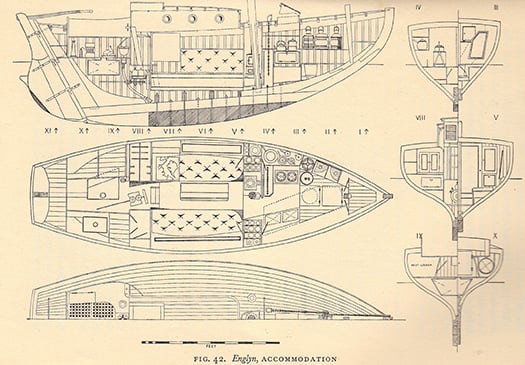
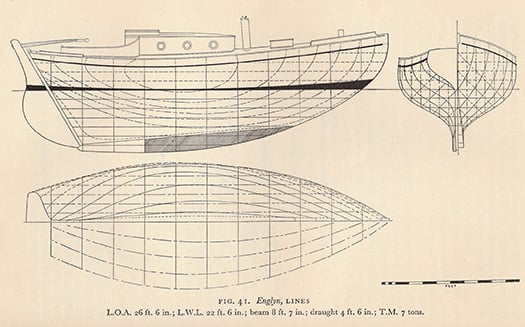
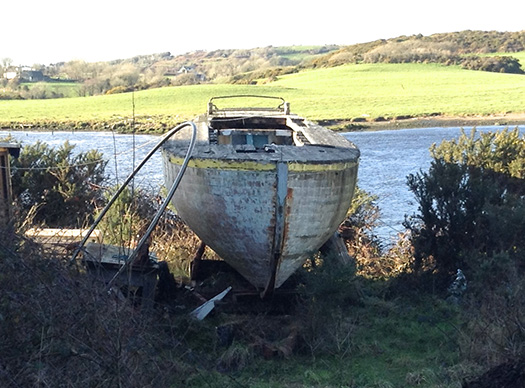
Englyn as she was last Monday at Oldcourt, as the re-birth of Ilen was being celebrated nearby. Photo: John Wolfe
Asgard: The Story of The Most Famous Yacht in Irish History Told This Wednesday At Howth Yacht Club
#hyc – Howth Yacht Club's Pat Murphy presents the life of Asgard, this famous yacht in Irish history from her launch in 1905 to her current conservation in Collins Barracks Museum and the 100th commemoration in 2014. The venue for the special talk is Howth Yacht Club this Wednesday, 18th February at 20:00. The lecture is open to all inlcuding non–yacht club members.
'Asgard's' 23 day voyage to collect the guns and ammunition for the Irish Volunteers and their landing in Howth in July 1914 is described in detail with unique photographs. Also covered will be the landing of Conor O'Brien's 'Kelpie' in Kilcoole.
Donations, no matter how small, will be welcomed on the night for the Howth 17s Heritage Fund.
Murphy Takes Asgard Centenary Talk To Fingal For Heritage Week
#Asgard - Boating historian and round-the-world yachtsman Pat Murphy will once again give his centenary talk on the famous gun-running ship Asgard and its pivotal place in Irish history over the coming days for 2014's Heritage Week.
The series of free talks in north coastal Dublin begins tomorrow (Monday 25 August) at the public library in Rush, moving to Donabate/Portrane (Tuesday 26), Malahide (Wednesday 27) and Baldoyle (Thursday 28).
Each evening's presentation begins at 6.30pm and booking ahead is essential – contact Charlie Quinn at Fingal County Libraries at [email protected] or call 01 8708464 or 01 8708414.
#asgard – The successful shipment of 1500 German-made Mauser rifles in 1914 by Erskine Childers and his associates in support of the Irish Volunteers and their defence of Home Rule was commemorated in a re-enactment yesterday at Howth attended by President Higgins. There were further ceremonies at Kilcoole in County Wicklow, where 600 of the rifles were later landed.
The 1905 Asgard, designed and built by Colin Archer in Norway to be a wedding present for Erskine Childers and his American bride Molly Osgood, is now conserved as a permanent exhibition at the National Museum in Collins Barracks. Yesterday, a modern ketch provided a useful stand-in for Asgard's most famous role in which – despite arriving in Howth on July 26th 1914 in a near-gale from the northwest – 900 rifles were quickly unloaded by the Volunteers and marched into Dublin.
It was only in the city centre at Bachelolors Walk that serious trouble erupted a hundred years ago, when British soldiers fired on a hostile crowd as the guns were being spirited away into hiding. The shots resulted in four civilian deaths, and their loss was mourned and honoured in yesterday's ceremonies.
The remarkable contribution by Erskine Childers and his family to Irish life for more than a hundred years was marked by the presence in Howth of Nessa Childers MEP and her brother Rory, the latter taking part personally in the re-enactment. President Higgins spoke movingly of the bravery of their grandparents in putting their lives at risk in taking action in support of a cause in which they passionately believed, their action playing a pivotal role in subsequent events.
The complexity of the gun running project became clear as the events surrounding it were outlined in Kilcoole. Originally, the 1500 guns were collected by Asgard and noted voyager Conor O'Brien's yacht Kelpie from a German tug with which they rendezvoused off the Belgian coast. Then while Asgard's entire cargo was sailed to Howth, most of the Kelpie's cargo was transferred off the Welsh coast to the 60ft yacht Chotah owned by the surgeon Sir Thomas Myles, who in his time was both the leader of the Irish Protestant Nationalist Association, and President of the Royal College of Surgeons.
{youtube}jVffT6thxxA{/youtube}
Chotah was brought into the project as it was felt her auxiliary engine would facilitate the landing straight onto the beach across St George's Channel channel at Kilcoole, where she was assisted by the McLaughlin family's fishing boat Nugget. In all, as an exercise in both gesture politics and guerilla activity, the mission was a remarkable success. But it paled into significance within days, as the outbreak of World War I swept events great and small aside. Many of those personally involved in the gun running were soon to see active service with the British forces, and Gordon Shephard, sailing shipmate and close friend of Erskine and Molly Childers for several years, and a leading figure in the Asgard episode in Howth, was to die on service as the youngest Brigadier in the British Army.
With Asgard now preserved as a national monument and never to sail again, several modern Asgard volunteers felt that an appropriately peaceful contribution would be to build a re-construction of Asgard's original little clinker-built sailing dinghy, as there are several photos of Erskine and Molly Childers in happier times with this little boat, which has long since disappeared. Thanks to basic drawings by Colin Archer, the boat could be exactly replicated, and lead organiser Pat Murphy and his team commissioned a reconstruction from boatbuilder Larry Archer (no relation), resulting in a new traditional boat which proved to be one of the stars of the show in Howth.

Happier days – Molly and Erskine Childers with the original Asgard dinghy
Kilcoole Gun Running on Yacht 'Chotah' to be Re–Enacted
#gunrunning – This weekend marks one hundred years since the gun running into Kilcoole Beach in County Wicklow by the yacht Chotah, as equally an important landing for the 1916 Rising but much less known than the famous Howth gun running carried out by Erskine Childers on Asgard.
It's part of a fascinating but little know maritime dimension to the Rising where yachts and trawlers were deployed to carry the precious weapons to Ireland. It was Childers' yacht Asgard and Conor O'Brien's Kelpie which carried the vital cargo, having been loaded from a tug in the North Sea but locally there were fishing vessels such as the Nugget from Howth that also ferried the guns from yachts to shore.
The Kilcoole Gun running Centenary Heritage Weekend is a two day celebration to mark a historic occasion: on 2 August 1914, 600 guns landed at Kilcoole beach and were brought to the village for the 1916 Rising. The programme is attached for download below.
In 1914, Erskine and Molly Childers transported guns on their yacht, the Asgard, from Germany to Ireland.
These had been bought to arm the Irish Volunteers in response to the Larne gunrunning that armed the Ulster Volunteers. However, of the 1,500 Mauser rifles, while 900 were landed at Howth the remaining 600 were to be landed at another suitable location.
On the morning of the 2nd of August 1914 the second part of this shipment was landed on Kilcoole beach, transported there on the yacht, the 'Chotah'.
What happened at Kilcoole will be celebrated this weekend and will include demonstrations and a re-enactment of trades of the time.
Come along and see the historical re-enactment of the gun running which will include a parade led by an Army Colour Party down to the beach, vintage trucks and cars of the time, and a full display by a re-enactment company to include a yacht ready to unload its cargo!
Don't miss the traditional Irish cookery demonstrations, lace & quilt expos and craft demonstrations such as weaving, stone cutting, wool spinning, wood turning/chair making and basket making.
In addition, there will be displays of historical importance pertaining to Kilcoole such as photography of the period, genealogy, traditional games, and music and dance. A Latin mass is also planned.
The community will be encouraged to dress for the period as Kilcoole will go back in time!
For more on this story click for a Wicklow People article
Special Radio Documentary: An Asgard
#Asgard – As the centenary anniversary of the Asgard's arrival at Howth Harbour approaches this weekend as previously reported on Afloat.ie, a special documentary is to be broadcast on RTE Raidió na Gaeltachta to mark the historic event.
The programme to be aired at 11am this Thursday, examines the historical impact of the yacht owned by Erkine Childers which landed a cargo of arms on 26 July 1914 for the Irish Volunteers that included rifles and ammunition.
A series of events marking the momentous event 100 years ago and that of the subsequent loss of life at Bachelors Walk will take place on Sunday 27 July.
Among the events taking place in Howth Harbour see the President Higgins will join Minister Humphreys to address and lead the official commemoration ceremony by the Defence Forces at the north Co. Dublin harbour's East Pier from 11.30am.
Following that, from 1pm the Asgard 100 Community Group will stage a re-enactment of the landing of arms, featuring a replica of the yacht Asgard and a flotilla of boats observed by President Higgins.
Local volunteers from the Howth GAA Club and marching volunteers from Dublin will unload and leave the pier with the consignment.
Historical context to the events of that day in late July 1914 will be provided by members of the Asgard 100 group throughout the proceedings.
For more details of all the events organised for the day, visit this link.





























